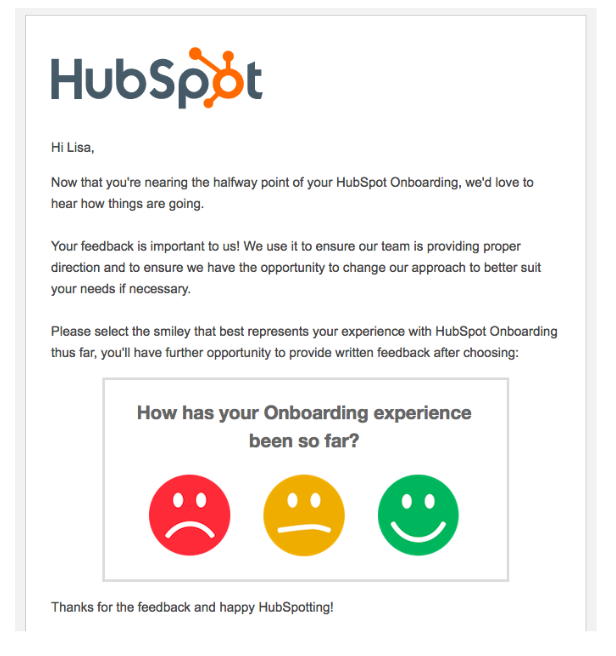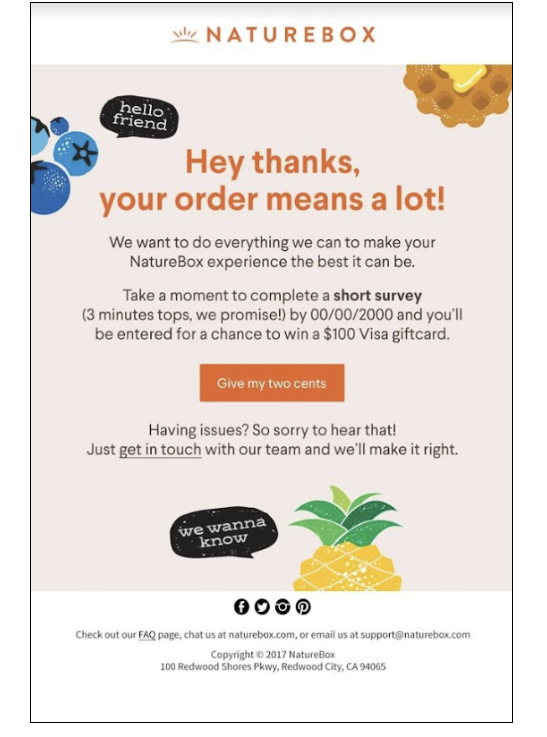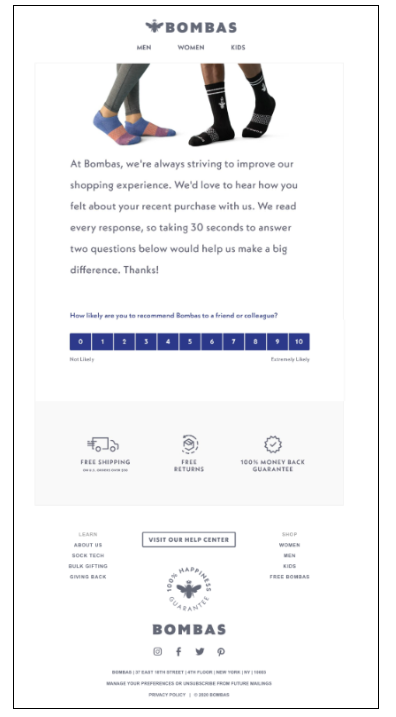3 Email Marketing Surveys That Reveal Customer Insights


Email continues to rank among the strongest revenue-producing marketing channels, with an average ROI of 3,800% and 59% of marketers saying it is their biggest source of revenue.
While most marketers are aware of how impactful email marketing can be, not all use email to its full potential; to pull relevant and actionable customer insights.
Here’s how you can use email segmentation and three different customer satisfaction surveys to gain actionable email insights and further boost your ROI.
Have you ever been planning a marketing campaign and had an imaginary dialogue with your customers? “Why won’t you just tell me what you want to see?”
We’ve all been there.
Fortunately, there are a couple of relatively simple ways to use email to gather customer insights. These insights can give us information to communicate more effectively with our current customers and help us find and convert our future customers.
Better insights allow you to communicate with customers and prospects on a more human level, appealing to their specific needs rather than using “blanket-speak”, which will quickly land your email in the trash.
What can we do to gain these customer insights and start speaking to the people on our email lists in a more personalized and effective way? The holy grail lies within segmentation strategy and customer satisfaction surveys.
Marketers who use segmentation in their email campaigns, report as much as a 760% increase in revenue.
Since most email service providers make segmenting on demographic data quick and simple, using segments to glean insights across your customer base is easier than you think.
What this looks like in practice:
If you haven’t yet implemented customer satisfaction surveys, then you may want to consider adding it to your 2020 roadmap. You’d be surprised how much information your customers would be willing to give you if you’d just ask!
There are various types of questions you can include in a survey and we’ll cover a few of the most popular.
Multiple choice questions allow you to set parameters and can be helpful when determining various customer preferences, i.e. category, gender, etc.
These questions can be as simple as “How has your experience been” with corresponding “smiley” options (see example below). These questions are lower-lift for the customer to answer, and will generally have a higher response rate compared to open-ended questions.

Pro Tip: Lead with multiple choice questions in your survey to increase the response rate. If you want to include an open-ended question, place after the multiple-choice section.
This type of survey question allows your customer to write their response in a text box.
The additional space encourages more candid feedback. While it is helpful to know that a customer is dissatisfied and “Not Likely” to recommend your company to a friend, knowing the “Why” behind their answer can empower your team to act on the feedback.
Let’s use a Women’s Athleisure brand for example. A disgruntled customer recently received a pair of leggings that were partially see-through. An open-ended survey will allow the customer to explain the reasoning behind their dissatisfaction.

Asking for customers to rate how likely they are to recommend your product/service to a friend provides quick and valuable feedback. Further providing them with a text box below to freely write in additional feedback will provide qualitative data to bolster your quantitative feedback.
Pro Tip: Adding an incentive to complete the survey (i.e. entered to win a gift card) will help boost completion rate.
One of the most common ways your company can better understand customer satisfaction is to ask them how likely they would be to recommend your company to a friend.
These surveys are often referred to as Net Promoter Score (NPS) surveys. While these surveys help you to understand customer satisfaction, they also show consumers that you care about their feedback and that the company cares about more than just the sale.
The quick and simple nature of these surveys tends to yield a high response rate. Consider segmenting those customers who rate you a 9 or 10 (your “promoters”) into a separate list for VIP offers or additional nudges to refer their friends.

Pro Tip: Make it easy for customers to give feedback by including the rating bar in your email like this Bombas example. It will increase the likelihood of response compared to requiring customers to click through to a landing page to complete the survey.
A company that is hungry for feedback—and willing to take action based on that feedback—is one that will continue to grow.
Customer satisfaction surveys are an easy way to speak directly to your customers to not only understand what’s working and what can be improved, but to show how much their happiness means to you.
